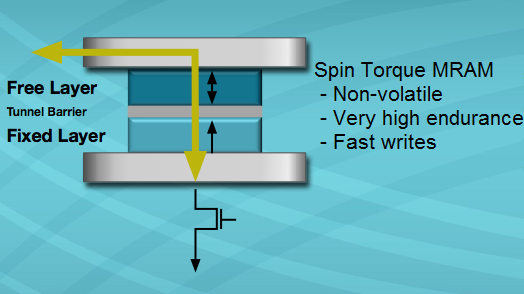The aim is to evaluate the Spin-transfer Torque DDR Magnetic Random Access Memory (MRAM) from EVERSPIN in radiation environment (SEE in priority). The two EVERSPIN STT-DDR MRAM proposed for evaluation are : · STT-DDR3 MRAM (see datasheet on https://www.everspin.com/getdatasheet/EMD3D256M ) · STT-DDR4 MRAM (see datasheet on https://www.everspin.com/getdatasheet/EMD4E001G ) MRAM technology is very interesting for space use since: · MRAM could replace both non-volatile memories (EEPROM, NOR & NAND Flash, …) and volatile memories due to its fast writes (SRAM or even DRAM…) · MRAM technology has a very high endurance (>1e10 cycles when Flash and EEPROM technologies are limited to about 10 000 or 100 000 cycles) · MRAM technology is known to have a good withstanding in TID, to have a memory cell SEU immune and some MRAM from EVERSPIN are already SEL immune. Both MRAM selected here are in Spin-Transfer Torque technology (STT-MRAM) using deep-submicron nodes. This Everspin’s newest MRAM technology use the spin torque transfer property, which is the manipulation of the spin of electrons with a polarizing current, to establish the desired magnetic state of the free layer to program, or write, the bits in the memory array. STT-MRAM provides a significant reduction in switching energy compared to Toggle MRAM, and is highly scalable, enabling higher density memory products. This third generation of MRAM technology uses a Perpendicular MTJ. These products perform like a persistent DRAM but with no refresh required. Having these MRAM available for Space Application could be a real benefit for improving the performances of future designs since these memories are 256Mb and 1Gb MRAM whereas available HiRel MRAM reach only 64Mb.

